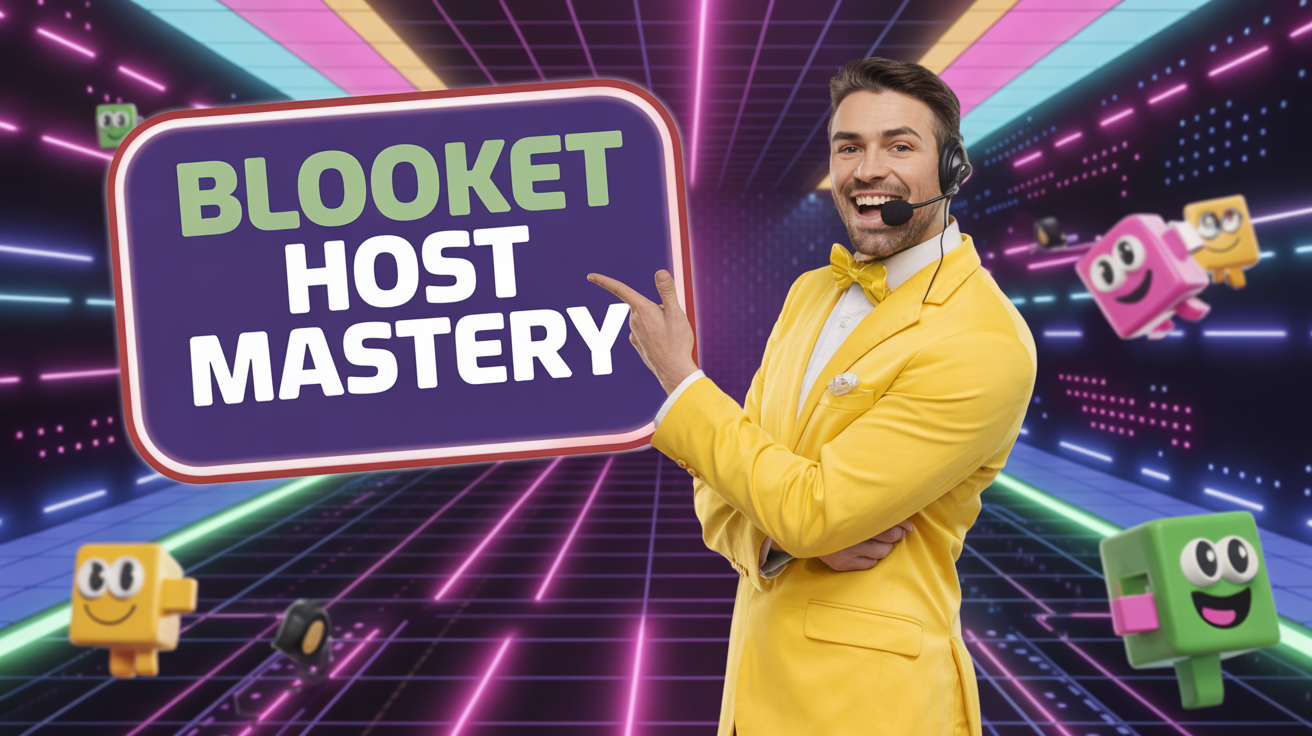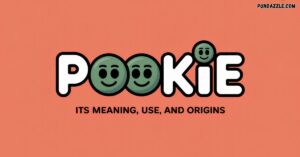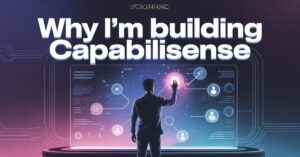Remember when “review day” meant groans and eye rolls? Those days are gone. Walk into classrooms using Blooket and you’ll witness something remarkable students literally asking when the next review session happens.
The engagement crisis hits hard. Studies show average classroom attention spans hovering around 10-15 minutes.
Traditional methods don’t cut it anymore. Kids grow up with Netflix, TikTok, and gaming consoles. Static worksheets feel prehistoric by comparison.
Blooket Host Mastery changes this dynamic completely. Teachers report 95% participation rates during game-based learning sessions.
Students who normally disengage suddenly lean forward, strategize, and actively recall information.
One middle school teacher in Ohio saw her average test scores jump 18% after implementing gamified learning three times weekly.
The transformation isn’t magic it’s psychology. Blooket classroom engagement taps into intrinsic motivation through competition, achievement, and immediate feedback. Students don’t realize they’re studying. They’re playing, winning, and accidentally learning.
Blooket Fundamentals: What Makes It Different
The Platform Architecture Explained
Blooket flips the traditional quiz script. Instead of questions driving gameplay, games drive question engagement.
This subtle shift matters enormously. Students focus on winning the game. Answering correctly becomes their strategy, not their burden.
Interactive classroom tools like Kahoot prioritize speed. Quizizz emphasizes individual pacing.
Blooket integrates questions into actual gameplay mechanics defending towers, earning gold, hacking passwords. The game itself provides context and meaning for each correct answer.
This game-based teaching method works because it removes the psychological weight of testing.
Students aren’t performing for grades during gameplay. They’re strategizing for virtual rewards. Learning becomes a byproduct of something genuinely enjoyable.
Host vs. Player: Understanding Your Role
As a Blooket Host, you control everything. You’re not just facilitating you’re orchestrating an experience.
You decide which Blooket game modes match your learning objectives. You adjust settings for your specific classroom dynamics. You moderate in real-time as gameplay unfolds.
The power dynamics shift beautifully. Students see you as the game master, not the taskmaster.
This changes classroom culture. You’re providing fun, not assigning work. That perception alone increases cooperation and enthusiasm.
Control features keep chaos minimal. You can pause games instantly. Skip problematic questions on the fly.
End sessions when time runs short. These classroom management tools mean you never lose authority while maintaining the playful atmosphere.
Your First Blooket Game: Setup That Doesn’t Waste Time
Account Creation and Dashboard Navigation
Creating your Blooket teacher account takes five minutes. Head to Blooket.com. Click “Sign Up” and choose the teacher option. You’ll need an email address and password. That’s it.
The dashboard greets you with three main sections:
- My Sets: Your created question collections
- Discover: Community-shared content
- News: Platform updates and features
Mobile works fine for hosting, but desktop provides better control. Larger screens let you monitor student progress while managing gameplay simultaneously. Split-screen capabilities help tremendously.
Question Set Strategy: Build or Borrow?
Creating Blooket sets from scratch gives perfect alignment with your curriculum. You control every question, answer, and difficulty level. This takes time though expect 30-45 minutes for a quality 20-question set.
The Blooket Discover tab offers thousands of pre-made sets. Search by subject and grade level. You’ll find comprehensive content covering virtually every topic. The catch? Quality varies wildly.
Smart teachers use a hybrid approach. Find a solid set in Discover, then edit it. Remove irrelevant questions. Adjust wording to match your teaching style.
Add 3-5 custom questions targeting your specific learning gaps. This takes 10-15 minutes and delivers customized content efficiently.
Time investment vs. quality balance matters. Don’t spend two hours crafting the perfect set for a 10-minute review.
Conversely, don’t grab random sets without reviewing them first. Nothing kills momentum faster than discovering typos or wrong answers mid-game.
Game Code Generation and Student Access
Hosting Blooket games starts with clicking “Host” on any question set. Choose your game mode (more on those shortly). Click “Host Now” and boom you get a seven-digit game code.
Display this code prominently. Project it on your board. Write it large. Students visit Blooket.com or use the app, enter the code, type their name, and they’re in.
Join code issues usually stem from three problems:
- Students typing the wrong code (happens constantly)
- Caps lock confusion (codes are case-sensitive)
- Connectivity problems (check your WiFi)
Pro tip: Keep the join screen visible until everyone’s in. Students can see classmates joining, which creates social pressure to hurry up and participate.
Game Mode Mastery: Choosing the Right Experience
Tower Defense: Strategic Thinking Under Pressure
Tower Defense shines for content requiring strategic application. Students answer questions to earn coins. They spend those coins building defensive towers against waves of enemies. Wrong answers mean fewer resources and weaker defenses.
This mode works brilliantly for:
- Math problem-solving sequences
- Science process understanding
- Literary analysis decisions
- Historical cause-and-effect relationships
Students must balance accuracy with speed. Rush through questions carelessly and you’ll have weak defenses.
Overthink and enemies overwhelm you. This mimics real academic challenges quality and efficiency both matter.
Younger students (grades 3-5) sometimes struggle with the multitasking required.
The game demands attention to incoming enemies while processing questions. Test it with your specific class before using it for high-stakes review.
Gold Quest: High-Stakes Competition
Gold Quest creates maximum energy. Students answer questions to earn gold. But here’s the twist they can steal gold from opponents or swap chests (potentially trading away their fortune).
The risk-reward mechanic teaches valuable lessons. Play it safe and protect what you’ve earned? Or gamble for bigger rewards? Students learn decision-making through natural consequences.
Classroom management during Gold Quest requires firm guidelines:
- Celebrate wins without gloating
- Accept losses gracefully
- No accusations of cheating
- Respect all strategies
This mode gets LOUD. Students react viscerally to swaps and steals. If you need quiet, choose differently. If you want maximum engagement and can handle noise, this delivers.
Crypto Hack: Pattern Recognition and Probability
Crypto Hack introduces randomness strategically. Students answer correctly to attempt hacking a password. Each correct answer reveals one digit. Get it wrong and you start over.
This mode excels for:
- Vocabulary building (multiple exposure)
- Fact memorization (retrieval practice)
- Formula application (repeated use)
- Foreign language practice (spaced repetition)
The luck element levels the playing field. Struggling students can get lucky and win.
High achievers might answer perfectly but get unlucky with passwords. This creates hope for everyone while still rewarding knowledge.
Watch for student frustration though. Some kids get discouraged when correct answers don’t yield immediate results.
Frame it beforehand: “This game rewards persistence and knowledge over time.”
Factory: Sustained Engagement for Longer Sessions
Factory works differently. Students answer questions to produce goods in a virtual factory. They accumulate resources gradually over extended play periods.
Use this for:
- Long review sessions (20+ minutes)
- Comprehensive unit reviews
- Study hall independent work
- Homework mode assignments
The production mechanic creates a satisfying progression system. Students see their factory grow.
Visual progress motivates continued engagement. It’s less intense than Gold Quest or Tower Defense, making it perfect for sustained effort.
This mode particularly helps students who dislike high-pressure competition. They’re building something, not battling someone. That framing shifts their emotional relationship with the content.
Fishing Frenzy: Luck-Based Fun for Mixed Abilities
Fishing Frenzy emphasizes chance. Correct answers let students cast their line. What they catch depends partly on luck common fish, rare fish, or legendary catches.
This mode shines when:
- You need inclusive gameplay
- Skill levels vary dramatically in your class
- You want pure fun without high stakes
- You’re introducing new, challenging content
The randomness prevents frustration. Struggling students can catch legendary fish and feel victorious.
Advanced students still answer more questions correctly but don’t dominate quite as completely. This creates opportunities for surprise victories and underdog stories.
Strategic Implementation: When and How to Deploy
Lesson Launch: Activating Prior Knowledge
Lesson energizers with Blooket transform the first five minutes of class. Instead of taking attendance while students zone out, launch a quick Fishing Frenzy reviewing yesterday’s content.
This accomplishes multiple goals simultaneously:
- Attendance (you see who’s playing)
- Prior knowledge activation (their brains engage with content)
- Mood setting (fun energy starts the period)
- Formative assessment (you identify knowledge gaps)
Keep opening games short 5 to 7 minutes maximum. You’re energizing, not exhausting. End while excitement peaks, then transition smoothly: “Great warm-up! Now let’s build on that foundation…”
Mid-Lesson Momentum Builders
Brain breaks with Blooket rescue dying lessons. You’re 20 minutes into direct instruction. Eyes glaze over. Bodies slump. Energy evaporates.
Stop. Launch a 5-minute Crypto Hack covering what you just taught. Suddenly neurons fire again. Bodies straighten. Attention returns.
Strategic timing matters enormously. Don’t wait until complete disengagement. Watch for early warning signs:
- Increased fidgeting
- Side conversations multiplying
- Decreased eye contact
- Questions becoming less relevant
Deploy your game before total loss of attention. Recovery becomes much easier.
Assessment Alternatives That Students Love
Game-based assessment provides authentic data while maintaining engagement. Instead of silent tests generating anxiety, students demonstrate knowledge through gameplay.
Blooket analytics track individual performance comprehensively. You see:
- Which questions students answered correctly
- How long they took per question
- Overall accuracy percentages
- Comparative performance metrics
Extract this data for grading purposes. Some teachers count Blooket games as quiz grades.
Others use them for participation points. Either approach works just communicate your system clearly beforehand.
Performance tracking in Blooket reveals patterns traditional tests miss. You notice specific students always struggle with certain question types.
You identify misconceptions shared by multiple students. This informs your re-teaching priorities.
Advanced Hosting Techniques
Live Question Adjustment and Moderation
Expert Blooket Host skills include real-time modification. You’re mid-game and realize a question’s confusing or contains an error.
Don’t panic. Don’t apologize excessively. Simply acknowledge it: “Folks, skip this one my mistake” and move on.
Address answer disputes professionally. Student challenges an answer? Pause briefly, explain your reasoning, then continue. If you’re genuinely wrong, admit it immediately. Students respect honesty more than infallibility.
Use wrong answers as teachable moments. When many students miss the same question, don’t just reveal the correct answer.
Explain WHY it’s correct. Turn mistakes into learning opportunities: “Interesting half of you chose B. Let’s unpack why A actually fits better…”
Student Accountability Systems
Classroom engagement strategies extend beyond the leaderboard. Competitive rankings motivate some students powerfully while discouraging others completely.
Create alternative recognition systems:
- “Most Improved” awards based on personal growth
- “Strategic Thinker” recognition for smart gameplay choices
- “Team Player” acknowledgment for helping classmates understand
- “Persistent Learner” celebration for not giving up
Student motivation strategies diversify when you celebrate multiple success types. Not everyone will top the leaderboard. Everyone can demonstrate growth, creativity, or persistence.
Consider team-based gameplay occasionally. Partner competitive students with collaborative ones. Mix skill levels intentionally. This builds peer learning opportunities and reduces pressure on individuals.
Differentiation Through Game Design
Create tiered question sets addressing multiple skill levels. Your “Challenge” set includes advanced questions. Your “Foundation” set covers basics. Your “Extension” set explores enrichment topics.
Assign different sets to different student groups simultaneously. Advanced learners tackle complex content while others solidify fundamentals. Everyone stays engaged at their appropriate level.
Homework mode Blooket enables independent practice perfectly matched to individual needs. Assign specific sets to specific students.
They complete them at home, you review their analytics, and you adjust instruction accordingly.
Student-Led Hosting: Empowerment Through Ownership
Teaching Students to Host
Student empowerment through hosting transforms classroom dynamics. Train responsible students to facilitate games. This teaches digital leadership, responsibility, and deeper content mastery.
Start with clear training:
- How to access and select question sets
- How to generate and share game codes
- How to manage time and end games appropriately
- How to handle technical problems calmly
Create a “Certified Student Host” program. Students complete training, demonstrate competency, and earn hosting privileges. This builds status and responsibility simultaneously.
Quality control matters though. Review student-created content before they host it. Check for accuracy, appropriateness, and alignment with learning goals.
Nothing undermines your authority faster than students hosting games with wrong answers or inappropriate content.
Peer Teaching Applications
Student-led games work beautifully for review sessions. Student experts create sets on topics they understand deeply, then host games teaching their peers.
The academic benefits compound:
- Hosting students deepen understanding through content creation
- Playing students learn from peer explanations
- Everyone develops communication and leadership skills
This particularly helps struggling students when peers explain concepts. Sometimes classmates clarify ideas better than teachers can. They use familiar language, relevant examples, and relatable contexts.
Free vs. Premium: Making the Investment Decision
Maximizing Free Features
Blooket free features provide robust functionality. You get:
- Unlimited game hosting
- Access to all basic game modes
- Ability to create custom question sets
- Use of community-created content
- Basic analytics and reporting
Most teachers thrive on the free version indefinitely. The free vs premium classroom tools debate often concludes that free suffices for standard classroom needs.
Workarounds exist for most limitations. Can’t save favorited sets? Screenshot the codes. Limited question set organization? Use a simple spreadsheet to track your best sets. These take minimal extra time.
Blooket Plus Benefits Breakdown
Blooket Plus Premium features include:
- Enhanced organizational tools for question sets
- Priority customer support
- Early access to new game modes and features
- Advanced customization options
- Extended time limits for games
- Copy and remix capabilities for discovered sets
The copy feature alone justifies the cost for many teachers. Instead of recreating good sets from scratch, you copy and modify them instantly. This saves hours monthly.
Calculate the investment: Blooket Plus costs around $36 annually (prices change, so verify current rates).
That’s $3 monthly. If it saves you 2-3 hours of content creation time per month, it pays for itself in convenience.
Budget justification for administrators emphasizes engagement data. Show them participation rates, test score improvements, and student feedback.
Frame it as professional development you’re investing in EdTech classroom innovation that directly impacts learning outcomes.
Troubleshooting: Solving Problems Fast
Technical Difficulties Mid-Game
Blooket troubleshooting requires staying calm. Students can’t join? Check three things immediately:
- WiFi connectivity: Is your internet actually working?
- Code accuracy: Did you share the correct code?
- Browser compatibility: Are students using supported browsers?
Game freezes happen occasionally. If it’s just one student, have them refresh and rejoin. If it’s everyone, end the game and restart. Don’t waste 10 minutes trying to fix it just relaunch.
Display problems usually stem from screen sharing settings or projector connections. Keep HDMI cables and adapters handy. Know your classroom tech setup intimately. Practice launching games before students arrive.
Classroom Management Issues
Classroom management with Blooket prevents most problems through clear expectations. Establish rules before the first game:
- Respectful competition: Celebrate your wins without mocking others’ losses
- Academic integrity: No looking up answers or helping others cheat
- Device responsibility: Use technology appropriately
- Volume control: Excitement is fine; chaos isn’t
Excessive competitiveness requires immediate intervention. Pause the game if necessary. Remind everyone that it’s practice, not the Olympics. One teacher uses a brilliant phrase: “We’re learning through competition, not competing through learning.“
Off-task behavior usually indicates one of three issues:
- The game’s too easy (they finish quickly and get bored)
- The game’s too hard (they give up and disengage)
- The game’s been used too frequently (they’re experiencing fatigue)
Adjust accordingly. Switch modes. Change difficulty levels. Take a break from gaming-based learning for a week.
Engagement Failures
When Blooket stops exciting students, you’ve likely overused it. Game-based learning remains effective when used strategically 2-3 times weekly maximum for most classes.
Online learning platforms all face the novelty decay. What thrilled students in September feels routine by February. Combat this through:
- Rotating between different game modes regularly
- Introducing new question set topics
- Varying when during class periods you play
- Combining Blooket with other interactive learning tools
Know when to pause completely. If enthusiasm genuinely dies despite variations, shelf it for three weeks. Students will miss it. Reintroduce it fresh and excitement returns.
Building Your EdTech Gaming Ecosystem
Complementary Platforms to Rotate
Don’t rely solely on Blooket. Digital teaching tools work best in rotation. Consider this strategic approach:
PlatformBest Use CaseUnique StrengthBlooketHigh-energy reviewGame variety and engagementGimkitExtended practice sessionsEconomy/strategy mechanicsKahootQuick whole-class checksSynchronous energy and simplicityQuizizzIndividual-paced assessmentSelf-paced, homework-friendlyQuizlet LiveCollaborative team reviewCommunication and teamwork focus
Gimkit vs Blooket debates miss the point. Use both. Blooket vs Kahoot comparisons similarly oversimplify. Each serves different purposes beautifully.
Monday might feature Kahoot for a quick warm-up. Wednesday could include Blooket for mid-week review.
Friday might deploy Quizizz for individual assessment. This variety maintains freshness while addressing different learning needs.
Integration With Your LMS
Link Blooket games within Canvas, Google Classroom, or Schoology seamlessly. Post the game code in your LMS assignment. Students access it there, maintaining your organized digital classroom workflow.
Classroom integration techniques include:
- Embedding Blooket links in daily agendas
- Creating LMS folders organizing games by unit
- Posting game codes in announcement sections
- Tracking participation through LMS gradebooks
This integration helps absent students too. They see what content their classmates reviewed. They can play homework mode independently to catch up.
Digital Safety and Responsible Use
Privacy Considerations
COPPA and FERPA compliance matters enormously. Blooket meets legal requirements for student data protection.
No personal information beyond student-chosen display names gets collected during free play.
Anonymous play options let students use nicknames instead of real names. Some teachers assign code names (Avenger1, Scientist4, Explorer9) for additional privacy. This prevents anyone from identifying individuals from gameplay data.
Parental consent requirements vary by district. Check your school’s policies regarding educational technology platforms.
Many districts include Blooket-type tools in blanket technology agreements signed at enrollment.
Digital Citizenship Lessons Through Gaming
Digital citizenship in education integrates naturally through game-based learning. Discuss appropriate online behavior before and after gameplay:
- How do we communicate respectfully in digital spaces?
- What does fair play look like with technology?
- How do we handle disagreements in online environments?
- Why does integrity matter even when no one’s watching?
These conversations transform fun learning games into character education opportunities. Students learn that online behavior reflects real values. Choices in games mirror choices in life.
Your 30-Day Blooket Mastery Plan
Week 1: Foundation
Days 1-3: Set up your account. Spend 30 minutes exploring game modes yourself. Play through each one to understand mechanics personally.
Days 4-5: Browse the Discover content library. Find three quality question sets matching your current curriculum. Save or note them.
Days 6-7: Create your first custom question set (15-20 questions). Keep it simple. Choose content you’re teaching next week.
Week 2: Experimentation
Host your first game low stakes, high fun. Try Fishing Frenzy for inclusive energy. Gather student feedback informally: “What did you think? What should we try next?”
Experiment with different modes throughout the week. Try at least three distinct game types. Note which ones your specific students enjoy most.
Document what works. Keep a simple log: “Period 3 loved Tower Defense but Period 5 found it confusing.” These observations guide future choices.
Week 3: Refinement
Implement advanced hosting techniques. Practice pausing games mid-play. Try skipping questions. Experiment with different pacing strategies.
Address any classroom management issues that emerged. Adjust rules if needed. Have conversations with students about improvements.
Integrate Blooket into lesson plans strategically not randomly. Plan specific games for specific learning objectives. Make connections explicit to students.
Week 4: Innovation
Train interested students to host. Start with your most responsible, tech-savvy kids. Let them facilitate a review game while you observe and support.
Develop game-based assessment strategies. Try using Blooket as a quiz grade. Review analytics to inform instruction.
Evaluate Blooket Plus features. Decide if premium makes sense for your teaching style and budget. Many teachers make this decision confidently after solid free-version experience.
Measuring Success Beyond the Leaderboard
Learning retention improvements show up in multiple ways. Test scores provide obvious data, but watch for subtler indicators:
- Students voluntarily reviewing content at home
- Increased hand-raising during class discussions
- Better recall of previously taught material
- More confident participation overall
Engagement analytics from Blooket show participation rates. Compare these to your traditional lesson engagement. If 22 of 25 students actively participated in the game versus your typical 12-15 volunteers during discussions, that’s measurable improvement.
Student feedback matters enormously. Survey kids periodically: “What helps you learn best?” When Blooket appears repeatedly in their responses, you’ve found something valuable.
Track behavioral changes. Are disruptions decreasing? Is homework completion improving? Sometimes gamified education impacts classroom culture in unexpected, wonderful ways.
Future-Proofing Your Blooket Strategy
New features roll out regularly. Follow Blooket’s social media and newsletter for updates.
The platform evolves based on teacher feedback, so staying current ensures you’re leveraging the newest capabilities.
Build sustainable question set libraries gradually. Don’t try creating 50 sets immediately. Add 2-3 quality sets monthly.
By year’s end you’ll have substantial resources. By year three, you’ll have comprehensive coverage.
Education technology changes constantly. Blooket might introduce new game modes, adjust existing ones, or alter features. Flexibility matters. Don’t marry yourself to specific approaches. Adapt as the platform evolves.
Connect with the Blooket community. Facebook groups, Twitter educators, and district colleagues share brilliant ideas.
Collaboration multiplies your effectiveness exponentially. Share your successful strategies and learn from others’ innovations.
Frequently Asked Questions
How do I host a Blooket game for maximum classroom engagement?
Choose game modes matching your students’ preferences and your learning objectives. Display codes prominently. Set clear behavioral expectations beforehand. Keep games relatively short (5-15 minutes) to maintain energy. Use strategic timing when students need energizing most rather than randomly.
What makes a successful Blooket host compared to other game-based learning platforms?
Successful Blooket Host Mastery involves understanding which game modes serve which purposes, reading your classroom’s energy in real-time and adjusting accordingly, creating or curating quality question sets aligned with curriculum, managing competition constructively, and leveraging analytics for instructional decisions.
Can students become Blooket hosts to enhance peer learning and leadership skills?
Absolutely. Train responsible students on hosting mechanics, quality control their content before they host, establish clear expectations for student hosts, and use student-led games for review sessions. This builds digital leadership skills while deepening content mastery for the hosting student.
Which Blooket hosting strategies work best for remote and hybrid learning environments?
Use homework mode for asynchronous independent practice. Host live games during synchronous virtual sessions. Share game codes via your LMS or video conferencing chat. Record your screen while hosting so absent students can see what content was reviewed. Create simple tutorial videos showing students how to join games from home.
How do I balance fun gameplay with rigorous academic standards and assessment needs?
Choose questions carefully fun format doesn’t mean easy content. Use Blooket analytics to track mastery rigorously. Combine game-based activities with traditional assessments. Make learning objectives explicit: “We’re playing Tower Defense to practice solving systems of equations.” Frame games as practice, not just entertainment.
What’s the ideal frequency for using Blooket without it losing effectiveness?
Two to three times weekly works well for most classrooms. Daily use causes fatigue quickly. Once weekly might not maintain momentum. Watch your specific students when excitement decreases noticeably, reduce frequency temporarily. Rotate with other interactive classroom tools to maintain novelty.
How can I create question sets quickly without sacrificing quality?
Use the Discover tab to find existing sets, then customize them. Focus on 15-20 high-quality questions rather than 50 mediocre ones. Batch-create questions while grading assessments convert test questions into game questions simultaneously. Collaborate with colleagues to share creation workload.
What classroom management strategies prevent Blooket games from becoming chaotic?
Establish rules before the first game. Address behavioral issues immediately, pausing gameplay if necessary. Keep volume expectations clear. Use proximity circulate during games. End games while excitement remains high rather than letting them drag. Celebrate wins graciously and accept losses maturely as modeled behavior.
Read more knowledgeable blogs on Pun Dazzle

Philipp Engel is a passionate writer and pun lover dedicated to spreading laughter and joy through words. As the creator and author of the website Philipp Engel, he delivers a delightful mix of puns, jokes, and playful humor that entertains readers of all ages. With a sharp wit and a deep love for language, Philipp aims to brighten every visitor’s day with clever wordplay and a smile, making humor a universal language that connects people everywhere.








